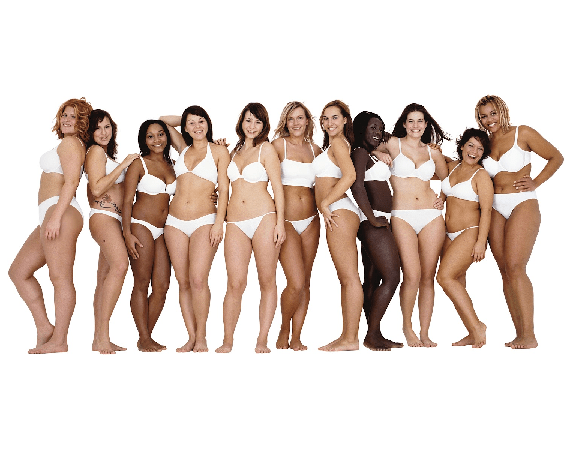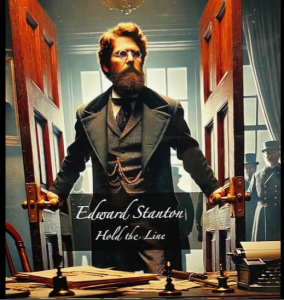The beauty industry is one that has dominated in terms of sales and marketing for decades. It is a field that many are attracted to, yet few take the time to understand how their projected images affect one’s self-image. Though, as many say, “beauty is in the eye of the beholder,” one company realized that beauty lies within all.
In 2004, Dove launched the Campaign for Real Beauty, which was meant to broaden the narrow view of beauty within society.1 Before the release of the Campaign for Real Beauty, Dove attempted to highlight the creamy, moisturizing feel that defined the soap brand by emphasizing the beauty in pampering oneself – oftentimes depicting a beautiful, thin woman, with red lipstick and painted nails. Taking a drastic risk in their marketing strategy, Dove sought to promote a new idea of beauty; they did so by using real women whose looks and weight were far different from the typical model—and it was a smashing success.2 But this success would not have been possible without the creative minds behind the project and the annihilating of what society says beauty should be.

For many decades, the beauty industry has marketed its products with images of the newest, most glamorous, most chic new looks for individuals to try. People love the process of making themselves feel beautiful, and tend to jump at the newest, most popular products to arrive in the market. Specifically, the beauty industry targets women by appealing to the “ideal” image of beauty that is popular at that particular point in time. The most used approach they take is in convincing women that what is most important about them is the way they look. The most common ideal of beauty (especially prevalent since the post-war 1950s) dominant in the minds of many today, is a tall, thin woman who is caked with flawless makeup with silky hair and a straight, white smile. Beauty is not only something that women feed off of, but it has become something people look to to define their own self-confidence. Magazines, games, and social media alike are doused with unrealistic portrayals of beauty. Though there is a high awareness of the impact that media’s idealization of thinness has on women’s health, the industry remains strict to a narrow range of cultural images of attractiveness.3 Before the Dove Campaign for Real Beauty was launched, women, for many years, became used to seeing themselves as being “less-than” that of others. In adapting to change, the beauty industry follows closely the shifting trends of the times. For example, the 1950s was characterized by rolled bangs and winged eyeliner, the 1980s by bold eye shadow and crimped hair, and the 2000s by fake tans and lip gloss.4 In following these trends, women have long adapted to the societal standard of beauty in an attempt to better fit in. These stereotypical views of the ideal woman is what not only feeds the minds of young girls, but it wrecks the body images of millions of women who don’t see themselves as beautiful. In general, the beauty industry tends to feed the minds of many with their own definition of beauty.
One of the key creators and marketing geniuses behind the Campaign for Real Beauty was Joah Santos. As the Chief Creative Officer and founder of NYLON (a multi-platform media company), Santos paved the way for the creative advertising techniques that were used in a multitude of famous ads. Santos became widely known after his making of the P.O.V. (purpose, originality, value) marketing strategy, which was first used to create the Dove Campaign for Real Beauty.5 Within this strategy, he hoped to simplify marketing by giving value to the content of an ad. Content, he explains, gives a story to the brand; the effect of the story is what matters most. There must be a link between a product and the brand’s purpose in order for the technique to make sense. This, in turn, allows the company to build up its credibility.
His focus on evolving a brand based on its story was revolutionary—he set the stage for perhaps the greatest campaign of the twenty-first century. In addition to this, Santos’ ideas led to the Dove Real Beauty Sketches, which was a short film led by Hugo Viega. Viega, a Portuguese copywriter, focused on the concept of risk-taking in his creative, rather than figuring out what would best sell. In his commercial campaign for Dove, Viega hoped to show women that they are more beautiful than they think. To do so, he had various women describe themselves to a sketch artist who could not see them. The sketch artist then drew images of those same women, as described by strangers who had met them the day before. When these images were compared, the stranger’s image was by far more flattering and accurate for every woman who participated. Not only did this video go viral in 2013, but it is said to be one of the most powerful and thought-provoking films Dove has ever released.6 These two men had an enormous role within the Campaign for Real Beauty, with their “test-and-learn” strategy taking them a long way. Ultimately, they sought to express to women that their imperfections do not define who they are. Without them, the campaign would not have grown into what it is today.
The conversation of beauty in today’s society is one that is standardized across the board. The projected images of beauty within media and advertisements alike are what influence the way women see themselves in relation to the rest of the world. These idealized images that are prevalent in advertising are what make consumers feel that they must strive for some unattainable goal of beauty. This, in turn, makes them feel threatened in a way that has a negative effect on their self-esteem.7
Humans in general have a tendency to compare some aspect of the self to that of others, and this is known as social comparison. Social comparisons take place when individuals are heavily influenced by their social environment.8 Projecting ultra-thin models as a beauty ideal comes with its costs. The general conclusion among researchers is that the exposure to thinness-depicting media is related to greater body dissatisfaction, lower body self-esteem, and self-objectification, especially among young girls.9 Social comparison allows one to understand the projected symbols from media, and how they tend to lower women’s self-assurance in society. The advertising industry routinely utilizes the theory to sell beauty products.10 Men, too, are affected by such standards of beauty; seeing such projected attributes in media, men feel as if they cannot reach those standards, ultimately becoming dissatisfied with their own image.11 Societal standards of beauty have been, and will likely always be, a driving factor in the way individuals view themselves.

In 2004, Dove, in conjunction with the Downing Street Group (a research consulting firm), decided to conduct a massive research experiment to verify the hypothesis that women tend to view themselves as less than optimal. For this, leaders of the Campaign for Real Beauty traveled to ten different countries, surveying a total of three thousand women to find out how they felt about their own appearance. In confirmation of Dove’s guess, the research concluded that merely two percent of women define themselves as being beautiful, and only nine percent described themselves as being attractive.12
The Dove Campaign for Real Beauty was one that was groundbreaking, revolutionary, and bold. Dove began as a company creating moisturizing beauty bars, and evolved into one that insists that women be comfortable in their own skin. This campaign not only encouraged confidence, but it widened the narrow view of what is considered “beautiful” by societal standards (i.e. thinness, fair skin, etc.).
Feminism (the advocacy of women’s equality in society) is a concept that is present in the Dove Campaign for Real Beauty. From the 1960s on, women have empowered themselves to advocate for their own definitions of beauty, not allowing a patriarchal society to define them. For too long, women were told to accept their roles in society and live domestic lives as housewives and caretakers. There has been a long effort to include emancipatory ideals in marketing campaigns, most often met with little transformation.13 To put it simply, the fight for all body types, skin tones, and hair types to be expressed equally in media campaigns has been long fought, yet most advertisers stick to stereotype models, lacking diversified representation. Before the 1960s, gender roles were reinforced by mass media and popular culture. However, after WWII, because women made up a large percentage of the postwar labor force, things began to change for women and their roles in society.14 Even in the 1950s, women began to take on new roles in society even as they were encouraged to play traditional roles. These new roles represented the beginning of women breaking away from the conformist ideals of that time period.
In relation to the twenty-first century, women have continued to advocate equality via feminist activism. The Dove Campaign for Real Beauty is a prime example of this, as it pulls away from the commonplace, stereotypical view of women in society today. In using “feminist consumerism,” the Campaign for Real Beauty has the power to disrupt gender norms with its engagement in grassroots activism, as well as in its critiques of the beauty industry.15

In all, the Dove Campaign for Real Beauty is one that has set the stage for groundbreaking change in the minds of women in today’s society. Not only have some beauty companies restructured their use of models and media strategies, but the idea of using “real women” has been popularized. In kicking off a conversation of women’s roles in society’s standards of beauty, the campaign reframed the very idea of female attractiveness. The empowerment of women to be confident in their own skin is what drove this campaign; it not only celebrated the natural beauty of women around the world, but it reinforced the idea that societal standards do not define who you are.
- Encyclopedia of Major Marketing Campaigns, 2007, s.v. “Unilever PLC,” by Jonathan Kolstad and Judson Knight. ↵
- Encyclopedia of Major Marketing Campaigns, 2007, s.v. “Unilever PLC,” by Jonathan Kolstad and Judson Knight. ↵
- Sarah Grogan, Body Image : Understanding Body Dissatisfaction in Men, Women and Children (London: Routledge, 2008), 11-12. ↵
- Fashion, 2015, s.v. “Beauty by the Decade: The Hair and Makeup Trends We Got from Each Era,” by Sarah Harris. ↵
- Revolvy, 2013, s.v. “Dove Real Beauty Sketches.” ↵
- Revolvy, 2013, s.v. “Dove Real Beauty Sketches.” ↵
- Encyclopedia of Gender in Media, 2012, s.v. “Social Comparison Theory,” by Neil Alperstein. ↵
- Encyclopedia of Gender in Media, 2012, s.v. “Social Comparison Theory,” by Neil Alperstein. ↵
- Kimberly Bissell and Amy Rask, “Real women on real beauty: Self-discrepancy, internalisation of the thin ideal, and perceptions of attractiveness and thinness in Dove’s Campaign for Real Beauty,” International Journal Of Advertising 29, no. 4 (November 2010): 644. ↵
- Donnalyn Pompper, Rhetoric of femininity: female body image, media, and gender role stress/conflict (Lanham: Lexington Books, 2017), 15. ↵
- Encyclopedia of Gender in Media, 2012, s.v. “Social Comparison Theory,” by Neil Alperstein. ↵
- Encyclopedia of Major Marketing Campaigns, 2007, s.v. “Unilever PLC,” by Jonathan Kolstad and Judson Knight. ↵
- Josée Johnston and Judith Taylor, “Feminist Consumerism and Fat Activists: A Comparative Study of Grassroots Activism and the Dove Real Beauty Campaign,” Signs 33, no. 4 (2008): 15. ↵
- Khan Academy, 2016, s.v. “Women in the 1950s,” by Michelle Getchell. ↵
- Josée Johnston and Judith Taylor, “Feminist Consumerism and Fat Activists: A Comparative Study of Grassroots Activism and the Dove Real Beauty Campaign,” Signs 33, no. 4 (2008): 941-66. ↵




95 comments
Montserrat Moreno Ramirez
I think Dove has a great marketing strategy since they decided not to focus on the “perfect women”, on the typical stereotype of women, but real people form different races, age, color and culture. They (Dove) really went beyond, they took a big leap and hoped that this new campaign would have the right impact and I’m glad it did because it was new, it was true and they reflected all women are beautiful and unique.
Devin Ramos
I really liked this article because it showed that a company rather have real women model for their products than actual models who may be skinnier than most people using their products. I also like the marketing side and advertising and business work that was used to create this new line of ads. This really seems like a good thing to me especially when we live in a age where the way someone looks is so important to one self and how they portray themselves.
Cynthia Rodriguez
I really enjoyed reading this article, especially because it discusses the beauty industry which is something that consumes my social media feed. I liked that you chose to talk about Dove’s real beauty campaign and how it changed the way people perceive beauty. They went from using the typical tall, thin woman with nice hair and white smile for their advertisements to using all different kinds of women. One thing that I found interesting is what Dove’s research found: only 2% of women they surveyed defined themselves as beautiful. I think it is sad that most women think so little of themselves. I understand how these women feel though. It is hard not to compare yourself to the pretty models used in the beauty industry, but I am glad Dove has decided to take their ad campaigns in a different direction. They want to make all women feel beautiful and empowered through their emphasis on feminism. This article was nicely written and very informative. Great job!
Alyssa Garza
I love how Dove used different females from race, size, and height in their campaign. Every woman is different and unique in their own ways instead of using models that all look the same. Before this campaign all you saw in different ads and commercials were females that all looked alike and all very thin that every female at one point in time started judging themselves based on the model they see on TV wanting to be as thin as her or as beautiful as her. This campaign changed the game by saying all female regardless of race, size, or height are all beautiful in their own ways and they should embrace it.
Richard Morales
Dove’s campaign for real beauty is one of the most brilliant modern marketing campaigns. It promotes something that is completely positive and is highly successful. It’s was very influential, inspiring other beauty companies to change their advertising tactics. It is interesting how much of an effect advertising has on societal standards and how we view ourselves. I was surprised to learn how few women classified themselves as beautiful.
Honoka Sasahara
I remember that I found the advertisement which is at the bottom of this article when I was reading a magazine before, and was moved so much.
Although we tend to decide beauty of women following a certain standard, this trend is coming to be out of date probably thanks to such campaign.
I really respect the company, Dove because beauty should not be determined, and women should have more confidence in their own beauty.
Greyson Addicott
Beauty is a very strange topic to review due to its innate tendency to relapse into science fiction. Indeed, while we all know that “beauty is in the eye of the beholder,” we also have to remember that the constitution of man generally defines certain attributes as “healthy” and “unhealthy.” For example, red lipstick is attractive to both sexes because we naturally perceive red lips as a symbol of great health. There are a great amount of these types of rules, and, if Dove were to play on these natural inclinations, rather than throwing together an assortment of people, they would certainly make just as much money as they do today, if not more! I am sure, however, that this ad campaign is not altogether wasted. After all, it does do something crucial: it works to convince people looking to improve themselves that they do not need to do such a thing. Why work out, why even put on makeup, for instance, if “real beauty” is just an undefined, unfinished idea?
Madison Downing
This article was very interesting especially how you focused on the growth of Dove’s beauty campaign. I loved that a multi-billion dollar company felt that they could use their voice to make a change in an industry who basically made money on people believing they were ugly and had to cover up their skin with make-up. Then Joah Santos who created the marketing format for P. O. V. is incredible because it also showed people from different companies coming together to make a change. It’s so sad to hear that only 2 percent of the woman surveyed believed they were beautiful and 9 percent thought they were just attractive like no that can’t be it! I just can’t even believe it, everyone should think they are beautiful if their heart is, skin can only get you so far.
Annissa Noblejas
Beauty ads have long since promoted their products by making women feel poorly about themselves in order to make sales. The concept that no one is good enough without buying something was a marketing norm until Dove decided to shake up the industry. Using common women, not models or airbrush editing, to show that beauty is not one size fits all. This campaign was massively successful.
Lynsey Mott
It’s so interesting to watch these Dove commercials on TV and see how beauty has changed, and to know the origin behind it? It’s amazing. I think what is also amazing is that two men are behind this campaign. They don’t put on commercials how every other commercials do, like how women are supposed to be skinny, but Dove is different. Doves commercials show the beauty in everyone, and that is truly incredible and inspiring.